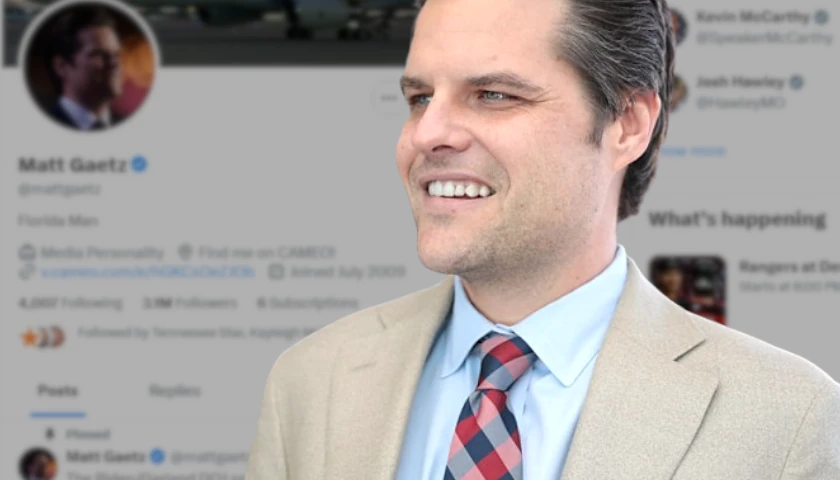by Jack Cashill
A week before Christmas, on the occasion of Alex Haley’s centennial year, Michael Patrick Hearn penned a lengthy tribute to his one-time Hamilton College prof. The first 4,000 words of the New York Times article Hearn fulfilled the promise of its title, as Hearn recounted in loving detail how “Alex Haley Taught America About Race — and a Young Man How to Write.”
Only about 500 words before the article’s completion does the Times reader learn there were problems with Haley1976 magnum opus”— Roots: The Saga of an American Family. Writes Hearn, much too matter-of-factly, “Haley and Doubleday might have saved themselves a lot of trouble had they acknowledged from the first that their big best seller was based on a true story.” This is Hearn’s gentle way of saying the book is a fraud. If additional irony were needed, Hearn wrote his paean to Haley under the Times rubric, “Nonfiction.”
Haley, in fact, stands accused of three counts of literary fraud. He passed off fiction as fact. He passed off another’s work as his own. And he plagiarized. Only one popular writer in recent times has faced comparable accusations. That is Barack Obama, author of his own imagined family saga, Dreams from My Father: A Story of Race and Inheritance. More on Obama in a minute.
As early as 1977, the Sunday Times of London had caught on that the family story Haley told in Roots was more tenuous than anyone had thought.” The New York Times reported on the Brits’ takedown of Haley, quietly acknowledging, “There appeared to be no factual bases … for Mr. Haley’s conclusion that he had actually traced his genealogy back to Kunta Kinte in the village of Juffure, Gambia.” When questioned, Haley insisted his errors were inadvertent and his intent had been to write a symbolic history of people,” one that would, as the Times put it, “convey a larger truth.”
This should have been the end of Roots and its author, but Haley was spared the humiliation showered on James Frey after his 2004 bestselling memoir, A Million Little Pieces, was shown to be part fabrication. The “disgraced” Frey and Doubleday had to pay more than $2 million to settle class action suits with allegedly disgruntled readers, a public shaming that the media gleefully reported.
Barack Obama had to sweat a little when he saw Oprah Winfrey dress drown Frey on her TV show. Like Frey, he too had fabricated much of his 1995 memoir, Dreams from My Father. No one noticed until Obama surfaced as a national figure in 2004, and book sales exploded.
Happily for his presidential ambitions, he received even better treatment than Haley. When those of us on the right started deconstructing Dreams after Obama announced for president, the media attacked us. It took a few more years before mainstream authors grudgingly began to chip away at the memoirnonfiction facade. In his 2010 biography of Obama, The Bridge, New Yorker editor David Remnick conceded that many of the racial incidents Obama recounted in Dreams were novelistic contrivances.”
Remnick, however, was even more generous with Obama than Hearn was with Haley. Yes, Obama darkens the canvas “to make a point about race, writes Remnick, but he does so to establish an emotional truth.” Ironically, in a 2008 article in Remnick’s own New Yorker, “Literary Hoaxes and the Ethics of Authorship,” Louis Menand mocks literary people who use the “higher truth defense” to shield favored authors from embarrassment.
In his 2012 biography, Barack Obama: The Story, the Washington Post David Maraniss dug a little deeper into Dreams. In his review of that biography, BuzzFeed’s Ben Smith counted 38 instances in which [Maraniss] convincingly disputes significant elements of Obamaown story of his life and his family history.” Not surprisingly, many of these fictional deviations have to do with race.
A Pulitzer Prize winner as were the other two Davids,” David Garrow nailed Obama on the fabrication charge in his 2017 biography, Rising Star. With ample evidence to back up his charge, Garrow says of Dreams that it was not a memoir or an autobiography; it was instead, in multitudinous ways, without any question a work of historical fiction.”
On count two, the media were no more keen on exposing Haley’s plagiarism than they were his or Obama’s fabrications. Hearn acknowledges the lawsuits filed against Roots, but very few Haley fans know about them. Especially troublesome for Haley was the damning 1978 suit by white novelist, Harold Courlander. That settlement got shockingly little media attention. Indeed, the Washington Post resorted to a local hook — “Bethesda Author Settles Roots’ Suit for $500,000” — to justify its trifling coverage.
Haley’s theft was a literary smash-and-grab. He broke into Courlander’s novel, The African, and ran away with eighty-one passages, plus plot points and certain characters. Haley’s denials under oath were so outrageous that the judge threatened him with perjury if he did not agree to settle, which he did to the tune of $650,000 or $2.7 million in today’s dollars. As condition of the settlement, Courlander promised to stay mum about the details. The media did not need any encouragement to do the same.
Although the plagiarism case against Obama remains unproven, at least in the court of law, there is considerable evidence that he snatched considerable chunks of Dreams from Kuki Gallman’s 1994 Kenyan memoir African Nights. Those interested in the details might take a look at my July article on the subject in The American Spectator. Literary sleuth Shawn Glasco certainly thinks Obama plagiarized Gallman. He found scores of words and concepts from her book that reappear all but intact in Obama’s Dreams.
On the third count, that of uncredited help, ample evidence suggests Obama is also guilty as charged. Despite his claims to the contrary — “I’ve written two books, I actually wrote them myself” — Obama did not write Dreams himself. In his 2009 book, Barack and Michelle: Portrait of an American Marriage, celebrity biographer Christopher Andersen tells how, at “Michelle’s urging,” a frustrated Obama turned to terrorist friend Bill Ayers for assistance.
To flesh out his family history, Barack had also taped interviews with Toot, Gramps, Ann, Maya, and his Kenyan relatives,” writes Andersen. These oral histories, along with his partial manuscript and a trunkload of notes, were given to Ayers.” As early as 2008, I had come to a similar conclusion using basic literary forensics and documented the evidence in my 2011 book, Deconstructing Obama.
Haley needed help to finish his book as well. In a searing 1993 exposé of Roots — “a hoax, a literary painted mouse, a Piltdown of genealogy, a pyramid of bogus research” — the Village Voice’s Philip Nobile added one more stunning detail: Haley’s editor at Playboy magazine, Murray Fisher, wrote large swaths of the book. On the plus side, at least Fisher wasn’t a terrorist.
Despite their many and egregious offenses, Obama and Haley have gone largely unpunished. The absence of public shaming has left their respective messages intact. Alex Haley Taught America About Race,” Hearn tells us, but he does not seem to know how destructive Haley’s lesson was.
In his deceptively congenial style, Haley tells how white men capture young Kunta Kinte in the hinterland. Conveniently clubbed unconscious for days, Kinte sees only the white raiders and British and American sailors. In reality, white men almost never ventured beyond the coast. Arabs and Blacks took care of that ugly business, and they ran the slave markets as well. Their best customers were Spanish and Portuguese traders. The reader sees none of that multiracial commerce.
Obama’s fabrications are not as epic. In fact, they are downright petty, but Obama’s storytelling did not end with Dreams. He used the presidency to spin false narratives. For Haley and Obama both, it has been all black and white, all victims and victimizers, canvas darkening sold as racial healing. Jussie Smollett faced trial for race hoaxing, and he did not do half the damage these bunco artists did.
– – –
Jack Cashilllatest book, Barack ObamaPromised Land: Deplorables Need Not Apply, is now on sale. See www.cashill.com for more information.





